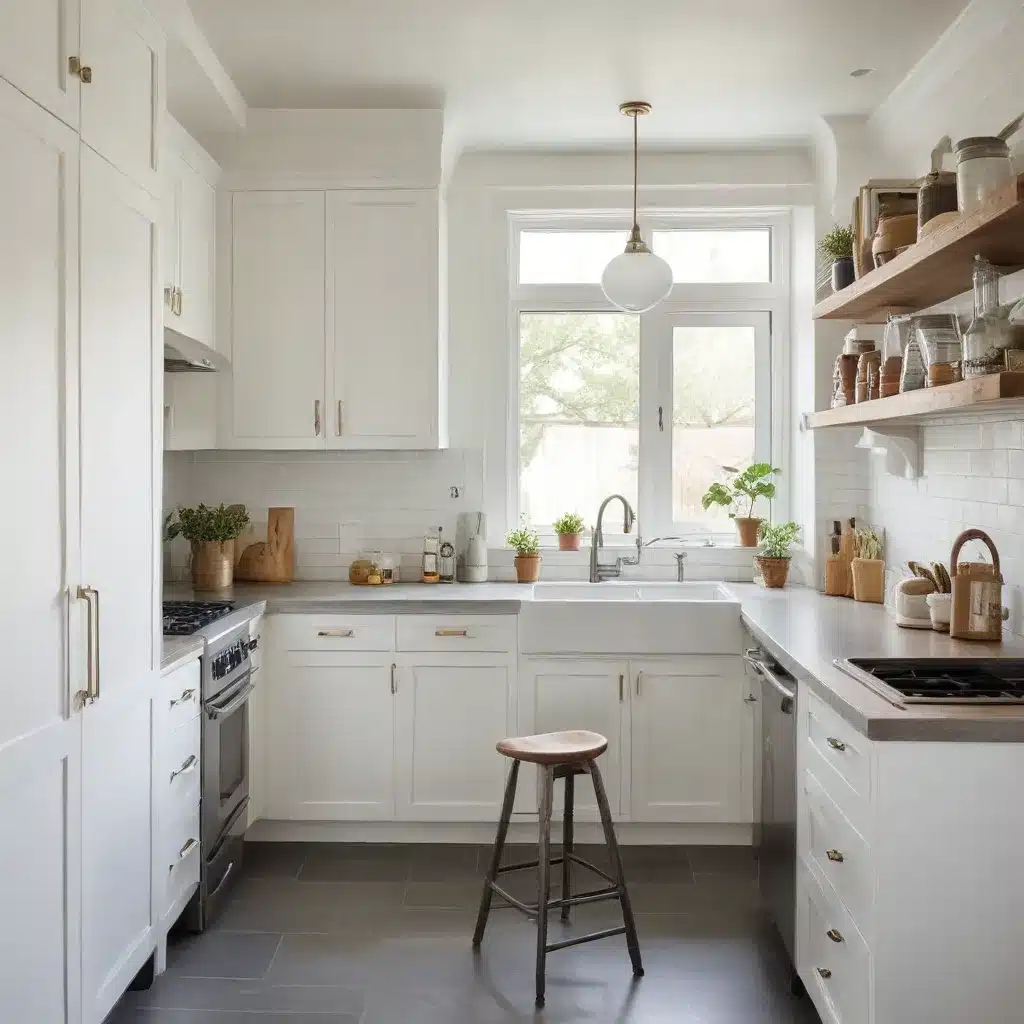
Updating a historic home often requires carefully balancing tradition and modernity. Whether you’re working with a compact layout or looking to breathe new life into an outdated space, integrating old and new elements can transform a property while preserving its inherent charm. As an experienced home improvement consultant, I’ve seen firsthand how thoughtful design choices and strategic renovations can create seamless small-space transformations.
Design Considerations
Balancing Tradition and Modernity
When approaching a renovation on an older home, it’s essential to consider the architectural integrity of the original structure. Maintaining historical elements while incorporating modern functionality requires intentional planning. Carefully evaluate the property’s existing features – from ornamental moldings to distinctive rooflines – and devise ways to gracefully incorporate them into the new design.
One effective strategy is to continue exterior materials, such as brick or siding, onto any additions. This visual continuity helps the new construction blend seamlessly with the original structure. Similarly, matching roofing materials and replicating window styles can create a cohesive aesthetic. Inside, preserving original hardwood floors, exposed beams, or vintage hardware can lend timeless character.
Spatial Optimization Strategies
Small-space living often necessitates creative solutions for maximizing functionality. Carefully curating the floor plan can make a significant difference, whether that means reconfiguring an outdated kitchen layout or converting underutilized areas into multifunctional spaces. Consider how to best incorporate elements like mudrooms, pantries, or enlarged bathrooms to enhance daily routines.
Thoughtful furniture selection and placement can also optimize limited square footage. Opting for multifunctional pieces, such as ottomans with hidden storage or convertible sofas, allows you to meet various needs within a single footprint. Leveraging vertical space through built-in shelving or tall cabinets is another effective technique for small-space living.
Lighting and Decor Integration
Proper lighting and intentional decor choices can dramatically transform the ambiance of a renovated space. Incorporate a mix of ambient, task, and accent lighting to create a warm, welcoming atmosphere. Strategically placed recessed lighting, pendants, or sconces can enhance architectural details while also providing functional illumination.
When it comes to decor, select pieces that complement the space’s character while infusing personal style. Vintage furnishings, textured fabrics, and natural materials can harmonize with historic elements, while more contemporary accents can add a modern touch. Thoughtful styling, from curated art collections to carefully curated accessories, can help tie the room together.
Renovation Techniques
Repurposing Existing Elements
If budget is a concern, consider ways to repurpose or refinish existing elements rather than replacing them entirely. Refinishing hardwood floors, repainting cabinets, or reupholstering furniture can breathe new life into dated pieces. Carefully evaluating which items to keep and which to replace can result in significant cost savings.
For those with a DIY mindset, upcycling can be an incredibly rewarding approach. Transform outdated light fixtures, doors, or furniture into unique, one-of-a-kind pieces that reflect your personal style. This not only reduces waste but also allows you to infuse your renovation with a customized, handcrafted touch.
Multifunctional Furnishings
In small spaces, prioritizing multifunctional furniture can be a game-changer. Look for pieces that serve dual purposes, such as a storage ottoman that doubles as a coffee table or a daybed that accommodates overnight guests. Built-in cabinetry and Murphy beds are also excellent ways to maximize limited square footage while maintaining a cohesive aesthetic.
Flexible Floor Plans
Maintaining a flexible floor plan is crucial for small-space renovations. Explore ways to create open concept layouts that allow for fluid movement and adaptable functionality. Strategically placed pocket doors or sliding partitions can help divide spaces as needed, while movable walls or folding furniture can provide the illusion of separate areas.
Sustainable Approaches
Energy-Efficient Upgrades
Incorporating energy-efficient features into your renovation can not only reduce your environmental impact but also lead to long-term cost savings. Investing in high-performance windows, improved insulation, or smart home technology can significantly enhance a home’s thermal efficiency and energy conservation.
Eco-Friendly Materials
When selecting materials for your renovation, prioritize those with low environmental impact. Sustainable flooring options, such as bamboo, cork, or reclaimed wood, can add visual interest while aligning with your eco-conscious values. VOC-free paints and formaldehyde-free cabinetry are also excellent choices for improving indoor air quality.
Minimizing Waste
A thoughtful renovation approach should also consider ways to reduce waste and divert materials from landfills. Repurposing or donating existing fixtures, appliances, and furniture can give new life to those items. For any demolition or construction waste, research local recycling programs or construction waste management services to ensure responsible disposal.
Aesthetic Harmony
Cohesive Color Palettes
Establishing a cohesive color palette is crucial for creating a seamless blend of old and new elements. Incorporate neutral base tones that complement the property’s architectural style, then selectively introduce accent colors or rich textures to add visual interest. This harmonious approach can tie together both historic and modern design components.
Blending Textures and Styles
Juxtaposing different textures and design styles can result in a visually striking and visually balanced space. Pair rustic wood elements with sleek, contemporary furnishings, or mix vintage accessories with modern art. The key is to find unifying design themes that create a sense of intentional, harmonious design.
Personalized Touches
Ultimately, a successful small-space renovation should reflect your unique style and lifestyle. Incorporate personal mementos, artwork, or custom-made pieces that infuse the space with your individual character. These personalized touches can help bridge the gap between the old and the new, creating a truly one-of-a-kind, seamless living environment.
Blending old and new elements in a small-space renovation requires careful planning, strategic decision-making, and a keen eye for detail. By prioritizing spatial optimization, sustainability, and aesthetic harmony, you can transform a historic property into a modern, functional, and inviting home that effortlessly balances tradition and modernity. For more renovation inspiration and expert guidance, be sure to visit https://www.reluctantrenovator.com.



